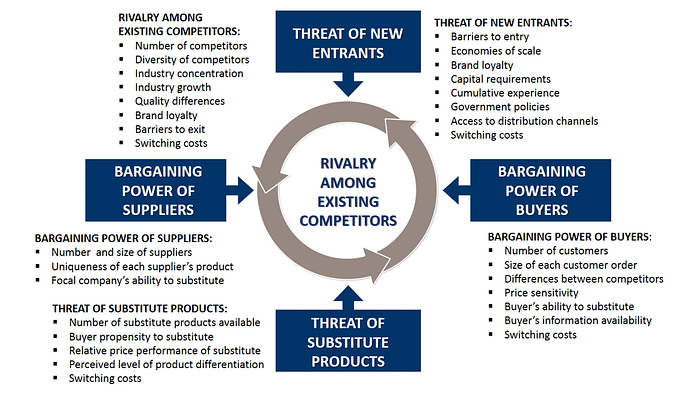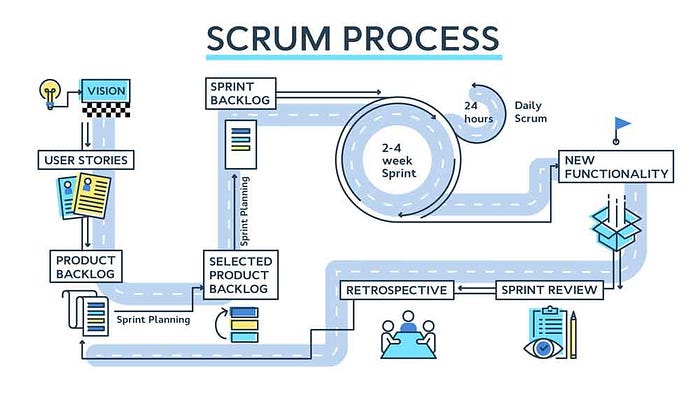The genesis of a new venture
Foreword
As an investor, friends tend to reach out for advice when they have a new business idea in mind. How do I test my idea? Will people want to use my product? How can I fund it? How do I get in touch with investors? If those are some of the questions you’re seeking answers to, then take a 10' break to read the article below.
PSA: there is no recipe for business success. Context, environment, timing, team are some of the factors that will influence the outcome of your next venture. Some are fully extrinsic, and you have no control over them. But as Malcolm Gladwell wrote in his book Outliers, “Success is not a random act. It arises out of a predictable and powerful set of circumstances and opportunities”. This guide aims to put you in the right set of circumstances to allow your idea to truly take-off.
Some parts of this exercise were inspired by Google’s sprint system, a pretty amazing framework which allow teams to achieve significant results in a short amount of time.
Step-by-step breakdown:
- How to screen your initial idea
- How to turn your idea into a well-defined solution
- How to analyze your target market
- How to build a user experience
- How to create an MVP (Minimum Viable Product)
- How to iterate and validate your product
- Next steps
1. HOW TO SCREEN YOUR INITIAL IDEA
You just came up with an insight about a friction point you’ve experienced, something you’ve shared with other people around you that feels worth exploring. It is now time to put this idea through a more formal idea generation process in order to turn it into a strong belief.
A. Define the friction point
Identify the repeated activity your users engage in by asking yourself the following questions: Is this something common in the industry/space I am targeting? How are people currently addressing this issue? Is this a painful and annoying experience that’s worth solving?
Make sure to clearly define what specifically makes it a painful experience. Most friction points are time consuming, repetitive processes that are mandatory in nature.
Start by asking yourself if the pain is strong enough to warrant learning how to use an entirely new tool. For instance, is hailing and waiting for a cab that annoying? Would you be willing to download an app and upload your bank info to avoid having to wait outside until an empty cab stops by?
B. Identify your target user
You’re most likely directly connected to your target user. Maybe your idea comes from your own personal experience, or maybe it is something you have repeatedly seen as an industry insider. Regardless, you need to know who your customer will be.
Start by building a psycho-demographic analysis of your audience. Ask yourself what their social status, income level, employment, interest, values and geographic parameters are. This will help you better understand their decision making process.

C. Identify your competitors
This step is meant to help you understand how your target users currently solve this issue. Do they use any other tools to mitigate the pain? What is the current status-quo? To go back to our ride-hailing example, an alternative would be to call a limo service in order to schedule a pick-up time.
Sometimes, you will find direct competitors that identified the same friction point and solve for it with an already existing product. This product could only partially solve for the pain point. Competition could also come from unrelated products / services that you have to list out. Try to understand why each alternative is or isn’t solving the pain point you have identified.
Suggested approach: Excel sheet containing competitor name, type (direct/indirect), a brief description, how they solve for the pain point, how they come short.
D. Engage in customer research
This step is meant to help you assess if the pain point is widespread across your target audience. To do so, start by selecting members of this audience to conduct your initial research. You can reach out to your network and extended circles or simply cold email professionals in the industry (Linkedin could be a useful tool) with a brief overview of your idea, a list of questions you would like to to ask them and/or a request for a short phone call. From this, you should be able to conclude that you are actually solving a widespread issue, and that your consumers are willing to test out a new product to do so.
A useful exercise to mentally picture who you will target is to build out your target persona. A target persona is defined by their needs, goals, frustrations and feelings. It goes beyond your initial psycho-demographic analysis. Here is an example for the rideshare industry.
2. HOW TO TURN YOUR IDEA INTO A WELL-DEFINED SOLUTION
Your initial user research validated the pain point you’ve identified. You are now confident that this is not just a “you” problem — It’s a widespread issue within your target consumer base. This next phase will help you strategize your approach to find a solution.
A. Create your lean canvas
A simple model to successfully do so is the lean canvas approach. This approach is meant to help you understand your product and the market it will operate in. Plug your idea into the chart below to do so:
B. Simplify your hypothesis and build a golden path
Make sure to write down your hypothesis in a single clear sentence. You can use the Twitter format (140 characters) as an additional constraint. This will help you clarify how you will approach the problem.
Then you should write down your user’s golden path. This is a theoretical approach to defining the most straightforward user experience possible. Here, you should highlight the main flow while putting aside your secondary flows (edge cases, etc.).
3. HOW TO ANALYZE YOUR TARGET MARKET
Congratulations! You now have a clear idea of the problem and you have strategized your approach to building the right product to solve it. Now is the time to take a deeper look at the market in order to better understand what forces will influence your business.
A. Build a SWOT analysis
A simple and useful framework to do so is the SWOT analysis, which stands for Strength, Weaknesses, Opportunities, Threats. By building one, you will gather a clear understanding of your competitive advantage (which you first explored through the lean canvas) and the future opportunities ahead (A great tool to inspire cofounders/early employees to join your team). Here is a simple and clear example with guidelines.
Alternatively, you could just watch the entire Silicon Valley show.

B. Create your 2x2 competitor matrix
Another framework that is commonly seen across the VC space is the 2x2 market map. This is useful to understand how your approach to solving your user’s paint points will differ from existing solutions. You should be able to draw from your initial competitor analysis to put together this map. Most 2x2 map look the same: You should stand alone in the upper right quadrant. This exercise will help you refine your view of the market. Make sure to pick 2 axis that make sense! Here is a great piece by BI on how to build your 2x2 matrix.
C. Analyze your market through Porter’s 5 Forces framework
Finally, you can use Porter’s 5 forces framework to develop a better understanding of the landscape you will be operating in. The real value of this exercise is to help you understand not only the structure of the industry you are targeting, but also the balance of power between each participant. This can be used to guide your launch strategy.
Porter’s 5 forces are:
- Competition in the industry
- Potential of new entrants into the industry
- Power of suppliers
- Power of customers
- Threat of substitute products

Now is probably a good time to stop and reflect: Is this still a good idea, and are you willing to spend 1–5 years of your life on it? If yes, then let’s go!
4. HOW TO BUILD YOUR USER EXPERIENCE
At this point in time, you have developed a firm belief that you are working on a great product and that the market forces will allow for the emergence of a new player in the space. The storyboard is a UX tool that will predict the main steps of your user’s interactions with your product. The point of this exercise is to force you to think about your user flow and to make you prioritize what is most important to your user.
A. Build your storyboard
You have previously built the basis of your user experience by creating a “golden path”. Now is the time to dive deeper into it by generating your first storyboard. The first step to do so is to write down the fundamentals of your user’s story: Define the scene as a real world situation that your customer will encounter. Then, you should start building the plot, starting with a specific event (the trigger) and ending with a beneficial outcome thanks to your product. You can use Freytag’s narrative structure to guide you.
You are now ready to create the storyboard itself. Take a first stab at it by writing down each main element of the story and make sure to include your user’s emotions. Once this is done, translate each step into a visual “frame”.

Your storyboard is now ready. This should help you distinguish “core” features from “nice to have features”. A core feature can be defined as an essential feature for your product — Without it, your user won’t experience any benefit. A “nice to have” feature makes the experience better, but it is something that would only marginally contribute to its value. For instance, One of Uber’s core features is the ability to match drivers and riders. A “nice to have” feature is the fact that you can choose from different car services (Uber X, XL, Black…).
B. Figure out the gain/pain ratio
Another interesting exercise you can do to perfect your product experience is the “gain/pain” ratio: In effect, you should write down each benefit to your target users (the gain) and each effort made by the user to adopt and use your product. The gains should clearly put weight the pains.
C. Get feedback on your storyboard
Throughout this process, you should always welcome product feedback. Don’t be shy, and don’t be afraid of other people “stealing” your idea. Why? Because a successful startup owes 45% of its success to execution, 45% to timing to market, and only 10% to the original idea (Those are made up percentages that hold surprisingly well). How many startups tried to launch a social network before Facebook? Yet there is only one Facebook.
At this point in time, you should select a few individuals from your target market and have them review 1) the overall clarity of your storyboard 2) the emotions 3) the outcome. It’s always good to go through a health check like this to make sure you are staying on the right track.
5. HOW TO CREATE AN MVP
The MVP (minimum viable product) is a crucial step in your product development journey, as it will allow you to launch a product quickly and with a small budget in order to gather market feedback. Through building this MVP, you will have to make key decisions on what users actually need (as opposed to nice to have features). The purpose of the MVP is to avoid the situation presented in the following question which I directly quote from Eric Ries, the author of the Lean Startup, “What if we found ourselves building something nobody wanted?”.
MVP definition: A minimum viable product (MVP) is a concept from Lean Startup that stresses the impact of learning in new product development. Eric Ries, defined an MVP as that version of a new product which allows a team to collect the maximum amount of validated learning about customers with the least effort.
So let’s dive into it. You’ve done a great work so far finetuning your idea into a real business opportunity, and you’ve actually already started brainstorming on what your MVP will look like by building a storyboard. There is two parts to building an MVP: The first part is the product itself, and the second part is the feedback collection process, which I will discuss in section 6.
A. List the core features
First, start by listing out the core features that need to present in this MVP. Make sure to remove anything superfluous, and keep it to the bare bones. As highlighted in the definition of the term, the MVP needs to require the least amount of effort possible.
B. Choose a platform to build your product
Second, for the sake of efficiency, look into how to build your core product while minimizing your usage of resources.For instance, Uber’s MVP relied on a landing page and SMS to connect drivers with riders. If you are a non-technical co-founder, you can rely on tools such as forms (Google forms, Typeform), phone numbers (Google Voice) and spreadsheets (Google sheets). You’ll notice the prominence of Google products, and thats because they are free as long as you have a Google account.
C. Create a go-to-market strategy
Third, think about your initial audience and go-to-market strategy. This means figuring out who is your customer base and how you will reach them. Make sure that this audience is relevant: If you are building a marketplace to buy and sell sneakers, your grandma probably won’t be able to give you meaningful feedback! Leverage your friends and family and personal network, post on relevant online forums, reach out to college communities, or simply buy a few social ads to get to your audience (Linkedin is great for B2B products, FB great for consumer facing products).
D. What about pricing?
Yes, your product probably looks a little barebones at this point. But that’s ok because if you followed the steps above, you are already providing the core benefits from your product to your users. and if this is a service people will eventually pay for, then one of the assumptions you should be testing is wether or not people are actually willing to pay for it.
At this point, you can take two routes for your pricing strategy:
- Cost-based pricing: Take the cost to build your product and add a market standard margin on top of it. This strategy makes sense for consumer goods and hardware.
- Market-focused pricing: Analyze products in your market and figure out what the average cost is. Then match that cost.
The price point you go for will heavily influence your product’s perception: If you are priced above market, this might be perceived as too expensive, but it could also signal that the quality is superior (ex: Apple). If you copy market, you will choose a safer route but won’t be able to compete on pricing. If you decide to price below market, it will most likely help you acquire your first customers, but it could also negatively impact your product’s perception. Competing on price can be a double edged sword if your competitors lower their prices — Their superior resources can help them stay competitive while you burn all your cash.
D. Start developing your product
Many MVP do not require product development, but some do. If this is the case, you should think about your approach to building all the necessary feature. You can use a waterfall chart, which is a sequential process to build each feature step-by-step. Alternatively, you can choose to use the agile method, which is greatly summarized in this guide by Atlassian. The agile method is considered to be the standard for dev teams.

6. HOW TO ITERATE AND VALIDATE YOUR PRODUCT
Your MVP is live! You finally have a product to show to your friends and family after months of keeping it low key. This is your baby, and you should be proud. But now is the time to set all your feelings aside, as you will start to iterate and validate your product. You will receive (and you should seek) tons of feedback on the experience and the features that you have built. Never take it personally! This phase is meant to help you optimize your product ahead of launch.
“Get closer to your customers than ever. So close that you can tell them what they need before they realize it themselves.” — Steve Jobs
A. Run a Voice of the Customer exercise
Voice of customer definition: Voice of the Customer (VoC) is a research method that’s used by businesses to describe the needs and requirements of their customers. This process captures everything that customers are saying about a business, product, or service and packages those ideas into an overall perspective of the brand. Companies use VoC to visualize the gap between customer expectations and their actual experience with the business.
Your goal is to get as much feedback as possible in the most unbiased way. You will want real users to provide you with valid feedback, and you will need to distinguish between one-off comments and recurring feedback. There are multiple exercises you can run to successfully gather this feedback:
- Customer interviews: Here is a decent guide on how to run a successful 1:1 interview. The challenge is to avoid leading on your customer to get the answers you want.
- On-site customer surveys: Leverage your landing page to set up a pop up with a short form questionnaire.
- Social media engagement: Directly reach out to your followers and listen to their feedback online.
- Website traffic data: If you have the Google Analytics plug-in set up, dig into audience, website traffic and engagement data to surface quality insights.
- Off-site surveys: Use Google Forms to share surveys with your target audience. This will help you get more data faster.

B. Use the HEART framework to measure your customer satisfaction
The HEART framework stands for Happiness, Engagement, Adoption, Retention, and Task success. It is a guide designed to help you quantify how your users are interacting with your products.
- Happiness: Net Promoter Score
- Engagement: CTR,DAU, MAU, WAU
- Adoption: New users, usage
- Retention: (churn, attrition)
- Task success: Time to complete tasks, errors
A lot of buzzwords here. The Net Promoter Score is a classic way of assessing wether your customers feel good enough about your product to promote it to peers. Surveymonkey has a free template that you could leverage to run the survey. CTR (Click-through rate), DAU (daily active users), MAU (monthly active users) and WAU (weekly active users) are all acronyms that measure your engagement rate. Those are very useful metrics to assess if you are growing your audience, but you have to be mindful about wether you are actually retaining customers or not (churn). Sometimes, high growth rates can hide low engagement rates. By building a strong retention rate and NPS, startups can easily create a cult-like following within their niches while avoiding to spend their entire fundraise on paid marketing.
All in all, you should expect to go through many versions of your product before launching it more broadly. The customer feedback you collect isn’t self sufficient, and you will need to take meaningful action to optimize your products. In some cases, you will have to “pivot” your product entirely because your audience simply isn’t engaging with it. And that’s fine, because launching a venture is very much a trial and error exercise. The graph below helps illustrate this point. I don’t know when exactly is the right timing to launch (vs going through another iteration) — Perhaps a reader could help here!
7. NEXT STEPS
Big congratulations to you! You have successfully launched your MVP and after many revisions, you now have a products that your early users love. You should feel great about yourself, and you’re about to start an incredible journey! But new challenges lay ahead: You want to get your products into the hands of as many users as possible, and you just realized that you will need more money to do so.
A. Time to fundraise
Your product needs visibility, and you need cash to get it into people’s hands. You also want to grow your engineering team to continue building a better product, to correct bugs and to add new features. Your sales team has to grow to reach large corporate consumers, and you want to launch your first paid social campaign. All the arguments above are great reasons to look for external funding.
While I won’t dive into much details here, you should know that investors (Venture Capitalists) will give you cash in exchange for an ownership stake into your company. Each time you raise a round, you will dilute your equity stake (your share of the company). This dilution will depend on the value that investors assign to your business, or the “valuation”. Raising money is always gratifying, especially at a high valuation (“oh wow, my business is worth $XX million dollars!”) but it is a means to an end, not an end in itself. Always remember that!
Here is a great guide by Y Combinator, a famous accelerator (A “studio” that helps you do all of the above in exchange for an equity stake in your business) in the valley. It’s a great place to start.
Most startups go on to raise 4–5 rounds before an exit event happens . An exit event is a type of liquidity event, which means that you get an opportunity to sell your shares or raise new shares. Typical exits include M&A (merger and acquisition) and IPO (initial product offering). Read this to learn more on the topic.
You should know that a majority of VCs rely on “warm” introductions. This means that you know someone they know, and this person agrees to connect your startup with their fund. It’s harder to get a first meeting when you’re not in the tech circles already. But some VCs are looking to change the game, because honestly, that’s detrimental to everyone: Great founders are left on the side. If you have a hard time reaching VCs, feel free to shoot me an email at jlepleux@gmail.com and I will do my best to connect you with the rigth people or resources to keep moving forward.
Finally, let’s chat about the pitch deck. The pitch deck is a sales tool that founders use to foster investor interest into their startups. Here is a great video on pitching your startup by Guy Kawasaki. There are tons of great templates to be found online (including Guy Kawasaki’s)
B. Hire your first employees
Your first hires are key in many ways. First of all, they will have an outsized contribution to your business by building much of the early tech, culture and processes. You should take your time to hire the right people, because they will also receive a significant chunk of your business as a reward for taking on the risk to join a young company. Read this TechCrunch article to learn about how much you should give. You will also need to build and manage a culture that fosters openness and creativity.
C. Introducing processes
Creating processes is essential once your business starts to scale. Yes, it’s sounds very corporate, but as your company grows, you will need to figure out how to create the right communication channels between your employees. For instance, a daily stand-up and weekly team meeting can help the company stay aligned on key objectives.
I hope this guide helped you better understand the process of launching a startup in the tech space. Feel free to reach out to me if you need any help or if you have any questions about the above. And above all, Good luck on the exciting journey that lays ahead!
About the author
My name is Julien, I am French and I write from NYC. I currently work at Bleu Capital, a seed-stage VC fund investing in retail:tech. Prior to that, I lead growth strategy at a tech venture called Cargo. Feel free to reach out at jlepleux@gmail.com.
